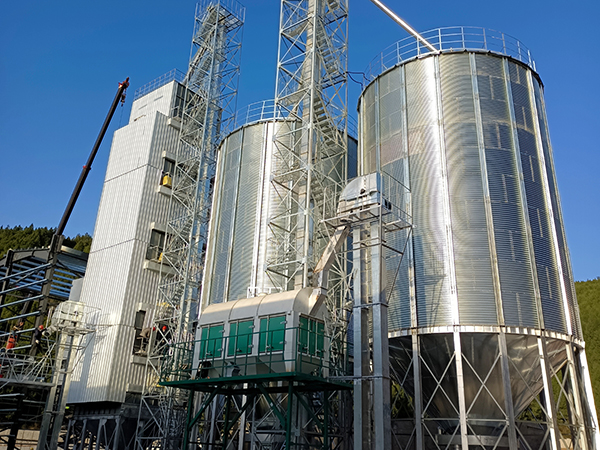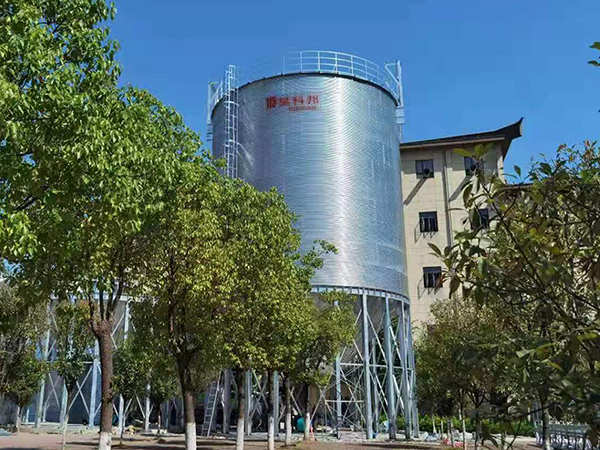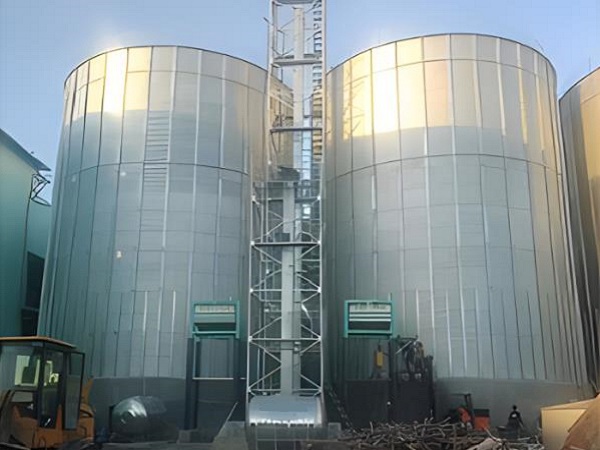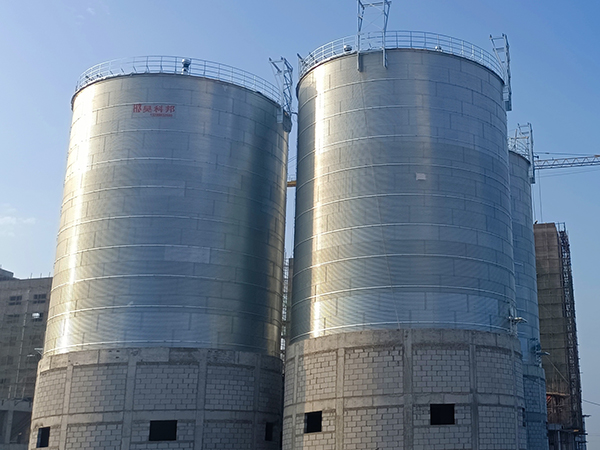Storage Feed Silo
Storage Feed Silo actively serve the purpose of storing animal feed. Typically made from metals such as galvanized steel, these silos ensure durability and resistance to corrosion.
Storage Feed Silo Introduction
Storage Feed Silo actively serve the purpose of storing animal feed. Typically made from metals such as galvanized steel, these silos ensure durability and resistance to corrosion. They are designed for the long-term storage of various types of feed, including but not limited to grains, pelletized feed, hay, and other animal feed products. Their primary goal is to protect the feed from the effects of moisture, pests, and other environmental factors, thereby maintaining the freshness and nutritional value of the feed.
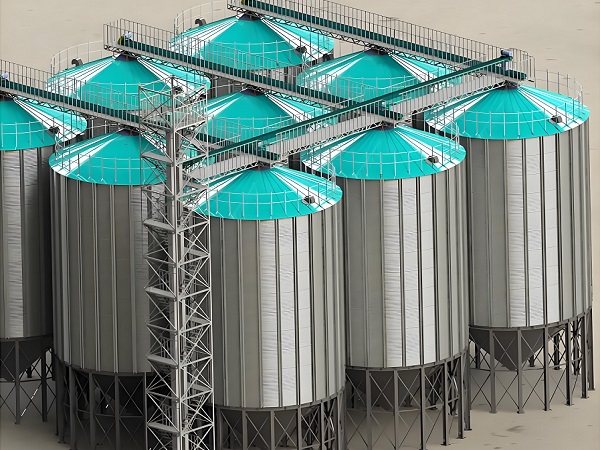
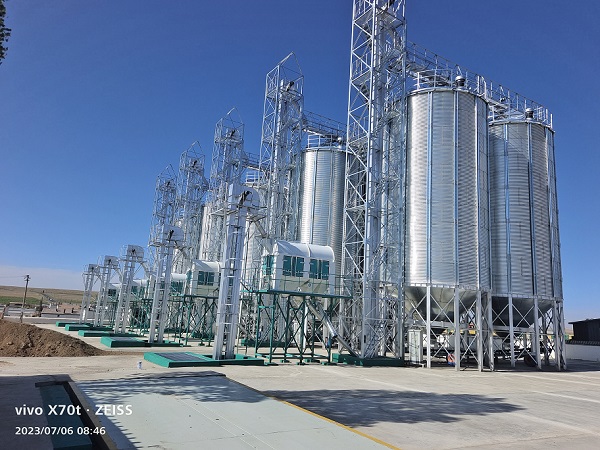
Characteristics of Storage Feed Silo
Structure and Material
Silos are typically made of steel, aluminum, or concrete, providing good sealing and durability to prevent the feed from becoming damp, moldy, or infested by pests.
Capacity and Size
The capacity of silos varies. Small silos can store a few tons of feed, while large industrial silos can store hundreds of tons or more.
Automation and Mechanization
Modern silos usually come with automated loading and unloading systems, such as screw conveyors and bucket elevators, to improve efficiency and reduce the need for manual labor.
Environmental Control
Some silos are equipped with ventilation, temperature, and humidity control systems to ensure the feed is stored under optimal conditions, preventing quality issues caused by changes in temperature or humidity.
Protective Functions
Silo designs take into account safety factors like fire prevention, explosion protection, and waterproofing to safeguard the stored feed and the surrounding environment.
Variety of Types
Depending on usage needs and site conditions, silos come in various types, including above-ground silos, underground silos, vertical silos, and horizontal silos.
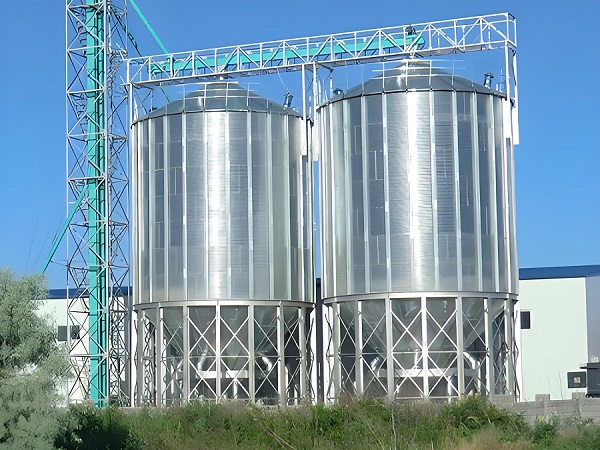
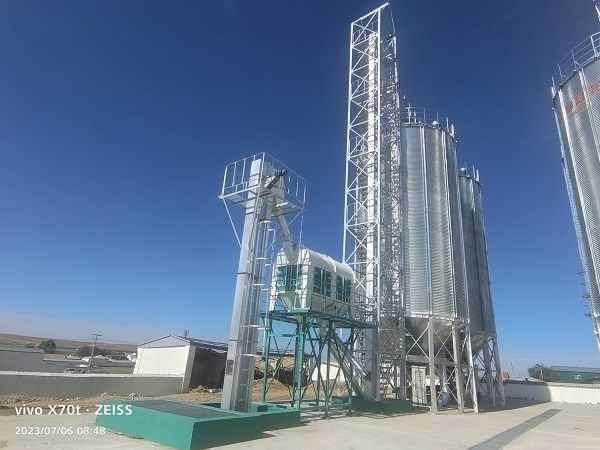
Structure of Storage Feed Silo
Silo Body
This is the main storage section of the silo, usually cylindrical or rectangular in shape. It is made of durable materials like steel, aluminum, or concrete to ensure sealing and structural strength.
Bottom Structure
The bottom of the silo can be flat or cone-shaped. A cone-shaped bottom helps the feed flow naturally and empty out completely, reducing residue.
Top Cover
The top cover is designed to prevent rain, dust, and other debris from entering the silo. Some top covers have ventilation holes to maintain internal air circulation.
Inlet
Located at the top or side of the silo, the inlet is used for loading feed. It is typically connected to feed pipes and conveying equipment to facilitate mechanical and automated loading.
Outlet
Positioned at the bottom or side of the silo, the outlet is used for discharging feed. The outlet usually has gates or valves to control the flow rate and quantity of feed.
Conveying Equipment
This includes screw conveyors, bucket elevators, and pneumatic conveying systems, which are used to transport feed from the storage area to other processing or usage locations.
Ventilation System
Some silos are equipped with ventilation systems, including fans and ventilation ducts, to regulate the temperature and humidity inside the silo and prevent feed from becoming moldy.
Measuring and Monitoring System
Modern silos are equipped with sensors and monitoring devices that can track parameters such as temperature, humidity, and feed levels in real-time, ensuring the optimal storage environment.
Safety Equipment
This includes fire prevention systems, explosion protection devices, and emergency exits to ensure the safety of people and property in case of emergencies.
Cleaning and Maintenance Facilities
Features like cleaning hatches and inspection ports allow for regular cleaning of the silo interior, maintaining hygiene, and inspecting the equipment’s condition.

Advantages of Storage Feed Silo
Protection from Environmental Factors
Silos provide a sealed environment that protects feed from moisture, pests, and contamination, ensuring the feed remains dry and safe for consumption.
Efficient Space Utilization
Vertical storage in silos allows for the efficient use of space, making it possible to store large quantities of feed in a relatively small footprint.
Ease of Handling and Automation
Modern silos are equipped with automated systems for loading and unloading, reducing the need for manual labor and increasing operational efficiency.
Improved Feed Quality
By maintaining controlled temperature and humidity levels, silos help preserve the nutritional quality and freshness of the feed over extended periods.
Cost Savings
Efficient storage and reduced feed wastage result in cost savings over time. Automation and reduced manual handling also lower labor costs.
Inventory Management
Equipped with sensors and monitoring systems, silos allow for real-time tracking of feed levels, enabling better inventory management and planning.
Safety
Silos are designed with safety features like fire prevention systems, explosion protection, and emergency exits, ensuring a safe environment for both the feed and personnel.
Flexibility and Scalability
Silos come in various sizes and types, allowing for customization based on specific storage needs and the ability to scale up as requirements grow.
Reduced Feed Loss
The controlled environment and efficient discharge systems minimize feed loss due to spillage, spoilage, or pest infestation.
Environmental Benefits
By minimizing waste and improving storage efficiency, silos contribute to more sustainable agricultural practices, reducing the environmental impact of feed storage and handling.
Application areas of Storage Feed Silo
Poultry farming
We store feed required for Chickens, ducks and other poultry.
Livestock breeding
We keep feed for cattle, sheep, pigs, horse and other livestock.
Farms
We use them as storage facilities for grains, feed materials, and other agricultural products on farms.
Grain processing and storage industry
We apply them in industries such as oil, feed, flour, starch, and brewing.
Ports and granaries
We use them for storing imported and exported or bulk-transited grains and feed.
Animal husbandry industry
We store feed and water troughs in animal husbandry farms.
Storage Feed Silo technical parameters
Scientifically speaking, the Silo capacity should be measured with volume (m3). Even in the same grain Silo, the storage tons will be different for different grains with different densities. The following table is calculated based on a Silo density of 0.75kg/m3, and surely HKB customizes Silo systems unique for you.
| Most Popular Hopper Bottom Steel Silo Technical Specifications | ||||||||
| Capacity | 50Ton | 100Ton | 150Ton | 200Ton | 300Ton | 500Ton | 1000Ton | 1500Ton |
| Model | TCZK
03605 |
TCZK
04507 |
TCZK
05507 |
TCZK
06406 |
TCZK
07307 |
TCZK
07313 |
TCZK
11010 |
TCZK
12811 |
| Diameter(m) | 3.667 | 4.584 | 5.500 | 6.417 | 7.334 | 7.334 | 11.000 | 12.834 |
| Total Height(m) | 9.56 | 12.53 | 13.25 | 12.85 | 14.70 | 21.42 | 20.95 | 23.51 |
| Volume(m³)
Density:0.75ton/m³ |
69 | 150 | 222 | 273 | 415 | 699 | 1346 | 2039 |
| Most Popular Flat Bottom Steel Silo Technical Specifications | ||||||||
| Capacity | 1000Ton | 1500Ton | 2000Ton | 2500Ton | 3000Ton | 5000Ton | 8000Ton | 10000Ton |
| Model | TCK
10014 |
TCK
11915 |
TCK
13715 |
TCK
15514 |
TCK
15518 |
TCK
18321 |
TCK
24718 |
TCK
25621 |
| Diameter(m) | 10.084 | 11.918 | 13.750 | 15.584 | 15.584 | 18.334 | 24.751 | 25.668 |
| Total Height(m) | 18.69 | 20.34 | 20.87 | 20.30 | 24.78 | 28.60 | 26.99 | 30.60 |
| Volume(m³)
Density: 0.75ton/m³ |
1335 | 2009 | 2701 | 2467 | 4145 | 6693 | 10879 | 13484 |

